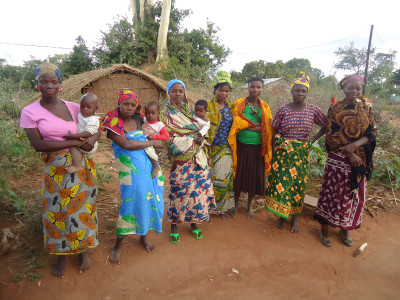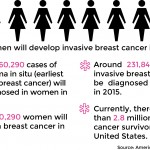
American Cancer Society epidemiologist Farhad Islami Gomeshtapeh and his team of researchers found high proportions of advanced breast cancers among women in Côte d’Ivoire and the Republic of Congo, findings they compiled in a study released Thursday. The study concluded that the large majority of breast cancer cases in Sub-Saharan Africa are only detected after they become advanced. This research was the first population-based cancer registry data to analyze cancer cases in both countries.
Islami’s study found that nearly three out of four tumors analyzed in Côte d’Ivoire were stage III or IV at diagnosis. By comparison, 24 percent of African American and 16 percent of non-Hispanic white women in the United States were stage III or IV at diagnosis.
Lynn Rosenberg, associate director of the Slone Epidemiology Center at Boston University’s School of Public Health, said that this research suggests that public awareness and limited resources may be key factors to the high proportions of late diagnosis in Sub-Saharan African women.
“The study shows that public awareness campaigns in other low-to-middle income countries reduced the stage at diagnosis,” she said. “This must mean they have educated the public to the fact that a woman who feels a lump in her breast should go to a healthcare facility. In the absence of that information, the woman might not seek care.”
Islami also found that mass mammogram screening is not currently a viable cancer control intervention in Sub-Saharan African countries due to limited resources. Rosenberg said she believes that low-income countries do not have such screening programs for lack of expensive machinery or trained personnel.
“Women therefore [only] come to diagnosis because they feel a lump in the breast, or a healthcare provider feels a lump,” she said. “At that point, the cancer is much more advanced than it would have been if picked up by mammography.”
Rich Feeley, chair of the Department of Global Health at SPH, suggested that economic hardship might also affect women, especially in rural parts of Sub-Saharan Africa.
“[Even if] the teaching hospital in the capital has relatively modern diagnosis and treatment services, only a limited portion of the population can afford to travel to the capital city by car,” he said. “Testing services like mammograms are generally not available at the primary care unit or district hospital level.”
Looking forward, Feeley said that countries will need to find a way to guarantee a higher level of public spending on health.
“South Africa, Namibia and Botswana are some of the few countries that get close to a reasonable target for healthcare spending,” he said, “but much more is spent per capita on high income households that have private insurance and do not rely on state facilities.”
In addition to increasing economic support for affordable healthcare, Feely said increasing the number of trained health workers in the public sector is imperative. Feeley added that organizations such as Partners in Health are beginning to experiment with providing some basic cancer services at rural hospitals in Haiti and Rwanda.
“Even where the teaching hospital in the capital has relatively modern diagnosis and treatment services, only a limited portion of the population can afford to travel to the capital city for care,” Feeley said.
Until countries find a way to guarantee a higher level of public spending on health, mitigating the lack of trained health workers and diagnostic technology may prove challenging.
Lara Lindsey, a junior studying pre-medical human physiology in the Sargent College of Health and Rehabilitation Sciences, said that public awareness stands as the most important initiative until long-term economic goals can be reached.
“I think that some important first steps are informing the people of the prevalence of breast cancer,” she said, “as well as training medical professionals nearby about how they can detect early breast cancer.”





So what? I could have guessed that result without doing a study!
On the other hand, if these epidemiologists wanted to do a groundbreaking and truly informative study — they would have looked at the overall death rate from breast cancer in this population?
Maybe its no different … or even better than ours. That information might go long way towards establishing if the long held “belief” in early detection actually provides any meaningful benefit to us in the developed world.